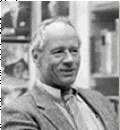We can’t let the home of one of the great heroes of the American Revolution be demolished.
“One of the great truths of history is that no past event was preordained,” wrote David McCullough in American Heritage. “Every battle, election, and revolution could have turned out differently at any point al
The farmhouse of General John Glover, one of the great heroes of the American Revolution, is scheduled to be demolished after July 1, 2024.
Editor’s Note: Nancy L. Schultz is a retired professor and chair of the Swampscott Historical Commission, which is working with other local partners to save the General John Glover Farmhouse.
In looking at the restoration of the front parlor, we can learn a lot about the Washington family, life in colonial America, and the art of historic preservation.
It's easy to see why curator Adam Erby gets excited entering the front parlor at Mount Vernon, which was recently reopened to the public after being closed more than a year for renovation.
Deciding to rescue a historic property is the start of what turns out to be a lifelong relationship as terrifying as it is exhilarating.
The threat was distant but definite, like cannon rumbling beyond the next ridge. Mr. and Mrs.
More and more these days, Americans are choosing vacation destinations on the basis of the history they can find there; and to think about traveling with a sense of history inevitably leads to thinking about historic preservation.
Established in 1949, the National Trust for Historic Preservation concentrates most of its efforts on advising and assisting local preservation groups.
Every town you pass through has felt the impact of the modern historic-preservation movement. Now a founder of that movement discusses what is real and what is fake in preservation efforts.
Twenty years ago nobody thought much about saving old buildings. The phrase urban renewal had an optimistic, forward-looking sound to it, and entire urban centers were razed with little thought of what might be lost in the process.
America has been many civilizations in its history, from the ,Stone Age to the age of genetic tinkering.
On September 7, three hundred and fifty years ago, a ragged group of Puritans under John Winthrop chose a site on the New England shore and declared it suitable for a new town—one more pinprick of settlement for a land in which they hoped to find the spiritual regeneration that
In a recent issue of The American West , Richard Reinhardt, a member of the board of directors of the Foundation for San Francisco’s Architectural Heritage, comments on the astonishing growth of the preservation movement: “Success has turned the
Pride lies at the heart of efforts to renovate a historic district in Cincinnati.
Writing in 1962, Lewis Mumford noted that “The forces that have formed our cities in the past are now almost automatically, by their insensate dynamism, wrecking them.… The prevailing economic and technological forces in the big city have broken away from the ecological pattern
Thousands of Native American pictographs and petroglyphs are at risk from vandalism amd theft.
Visitors to Monticello today, taking in its handsome lawns and flower beds, its beautifully finished and furnished rooms, its immaculate floors and woodwork, have no trouble picturing Thomas Jefferson entertaining such luminaries as Lafayette and Washington o
Saving Hundred-Year-Old Buildings
The idea of urban renewal has traditionally been predicated on the superficially reasonable assumption that the best way to handle crumbling blight is to pluck it out—raze it, tear it down, get rid of it—and build something better: shopping malls and office c
At one point in the Battle of White Plains an American militiaman whose unit was temporarily not engaged with the enemy called out to a nearby civilian: “Who’s ahead?” The civilian, holding a small square object up to one ear, replied: “Oakland, 3 to 1.”
The systematic collection of the sources of local, as well as of national, history began in the United States with the organization in 1791 of the Massachusetts Historical Society.
In the last issue this magazine commenced regular and intensive coverage ot conservation and historic preservation, signifying our deep concern for the widely endangered physical heritage of America.
It was a bright day for the Republic, that afternoon of May 15, 1815, when the U.S.S. Constitution victoriously dropped anchor oil the Battery at New York.
The wrecker’s ball swings in every city in the land, and memorable edifices of all kinds are coming down at a steady clip.
There are places on this earth, in Europe particularly, where conservation is taken to mean the preservation of the notable works of man as well as nature.





